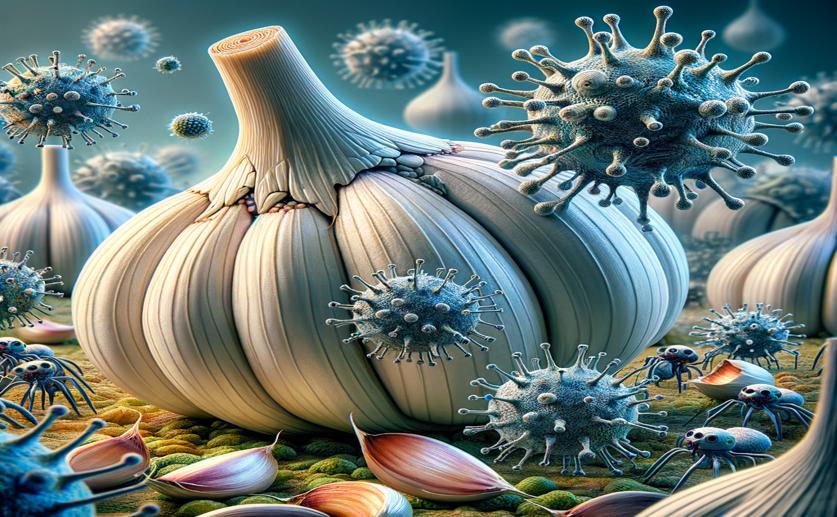
Garlic-Based Nanomaterials to Fight Drug-Resistant Infections
Greg Howard
21st May, 2024

Image Source: Natural Science News, 2024
Key Findings
- Researchers at Imam Abdulrahman Bin Faisal University created a nanocomposite using garlic and a metal-organic framework (ZIF-8)
- The nanocomposite showed strong antibacterial and antifungal properties, especially against Candida species
- This innovative approach could help treat drug-resistant infections by enhancing the natural antimicrobial properties of garlic
References
Main Study
1) Bionanocomposites comprising mesoporous metal organic framework (ZIF-8) phytofabricated with Allium sativum as alternative nanomaterials to combat antimicrobial drug resistance.
Published 20th May, 2024
https://doi.org/10.1007/s00449-024-03027-y
Related Studies
2) Evolutionary Emergence of Drug Resistance in Candida Opportunistic Pathogens.
3) Chemical Constituents and Pharmacological Activities of Garlic (Allium sativum L.): A Review.
4) Antibacterial properties of Allium sativum L. against the most emerging multidrug-resistant bacteria and its synergy with antibiotics.



 28th April, 2024 | Jenn Hoskins
28th April, 2024 | Jenn Hoskins